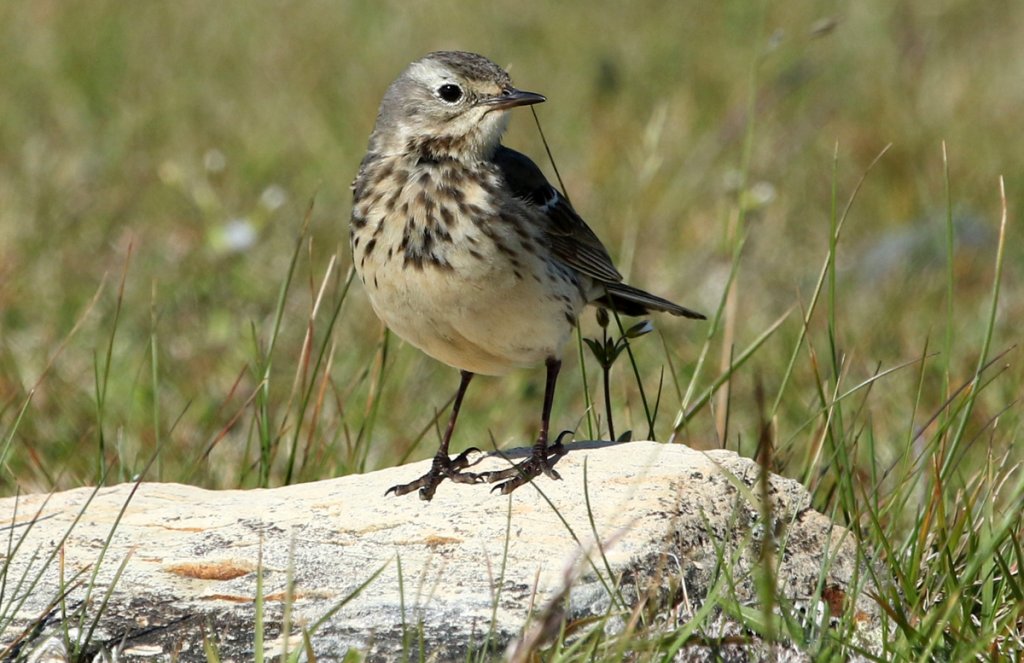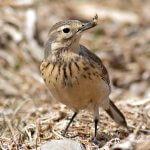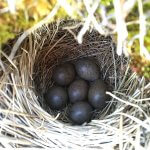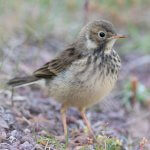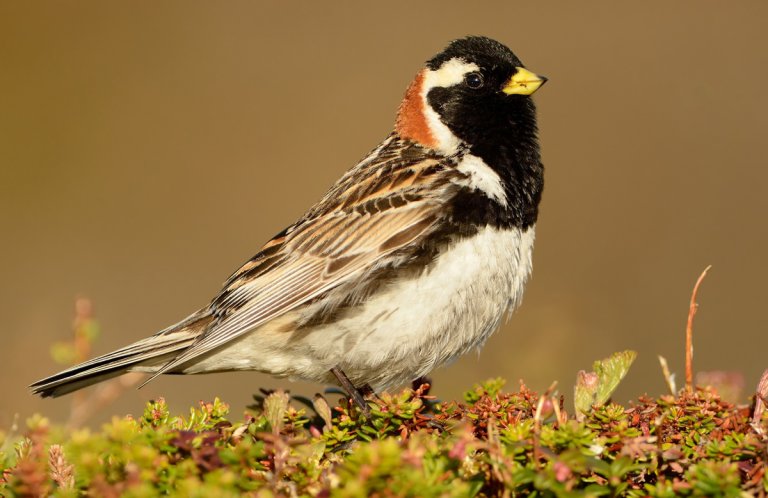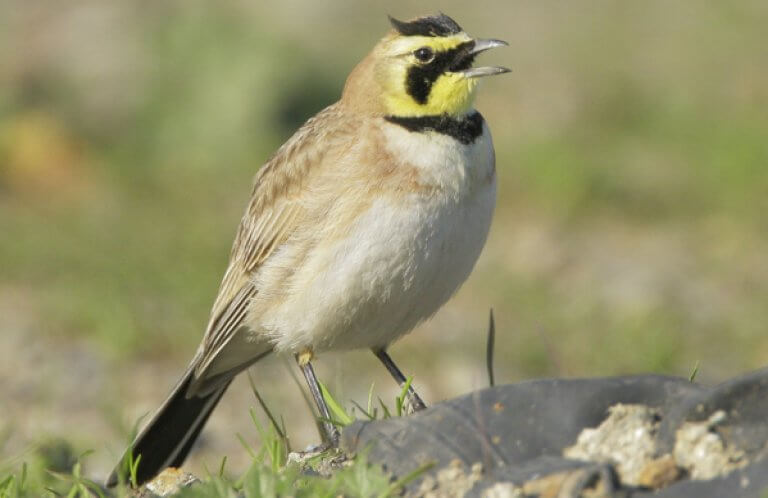About
The American Pipit, an inconspicuous bird roughly the size of a Vesper Sparrow, was once lumped with a larger group of similar birds spread across the Northern Hemisphere, known collectively as the Water Pipit. In the mid-1990s scientists split the Water Pipit into four separate species based on differences in plumages, calls, and genetics.
Upon closer inspection, the American Pipit is subtly attractive, its grayish-brown upperparts contrasting with warm buffy to orange-pink flanks and belly, embellished by various amounts of darker streaking. Its dark tail has white outer feathers. It has a short, slender bill, long legs, and elongated hind claws, a feature found in many other ground-dwelling birds such as the Lapland Longspur and Horned Lark.
An American Pipit can be identified from afar by several distinctive mannerisms: it walks rather than hops, maintaining an upright stance and continuously bobbing its tail. The related Sprague's Pipit, with which it may share some wintering habitats, has a streaked back, paler legs, and doesn't bob its tail.
This species has a number of nicknames, including Buff-bellied Pipit, Titlark, Brownlark, and Shore Lark, the last an important clue to one of its favored habitats.
Shoreline Songbird
The American Pipit frequents a variety of open habitats throughout the year; unlike most grassland songbirds it readily ranges into wet areas as well, particularly during migration and in the winter. This bird can often be spotted walking on mudflats, shorelines, and sandbars with tail a-bob as it forages for aquatic insects in the manner of a Semipalmated Sandpiper or Killdeer. An American Pipit will even wade into the shallow water of flooded fields and tidal pools in pursuit of prey.
Songs and Sounds
The name "pipit" is onomatopoeic, deriving from the American Pipit's sound-alike call note. The song, heard during the male's flight display, is a rapid series of notes: chweee-chweee-chweee.
Listen to a group of American Pipits calling:
Song:
Breeding and Feeding
Like most songbirds, the American Pipit is monogamous during its breeding season. The male courts potential mates through aerial displays accompanied by song. Once mated, the female builds her cup-shaped nest on the ground beneath the shelter of a clump of vegetation or rock. She lays a clutch of 3-7 eggs, which she incubates for approximately two weeks. Her mate brings her food while she incubates; after the young hatch both parents feed them. The chicks fledge around two weeks after hatching, and once independent, begin to form loose flocks.
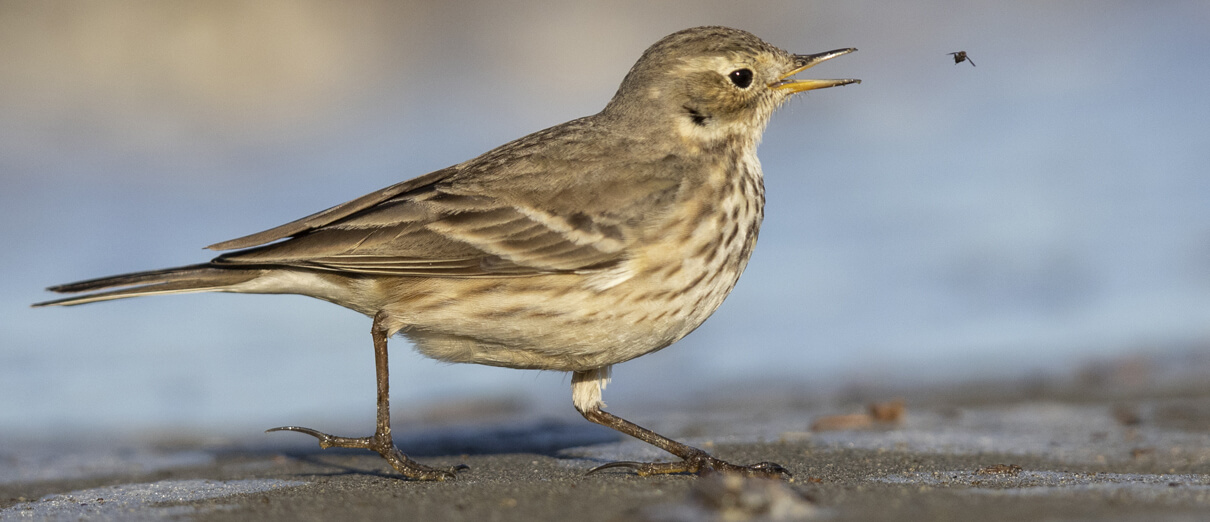
An avid insectivore, the American Pipit feeds on a wide variety of insects and spiders, available in abundance on its Arctic breeding grounds. It adds small mollusks, crustaceans, seeds, and berries to its diet during the winter. This pipit forages while walking along the ground and gleaning, sometimes running after its prey to capture it. It readily wades into shallow water in search of aquatic invertebrates.
Region and Range

The American Pipit breeds in remote areas of the Arctic and on alpine tundra habitat across Alaska, Canada, and in some parts of North America. It migrates south as far as Central America to winter in a variety of open habitats. During the winter this species is usually found in large flocks.
Three subspecies of American Pipit are currently recognized, based on differences in body size, plumage color and pattern, and leg color.
Conservation
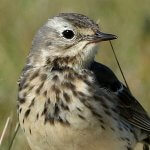
Help support ABC's conservation mission!
Although still common and widespread, the American Pipit faces habitat loss in parts of its range, particularly in North America, where climate change is fragmenting and shrinking available alpine breeding habitat. Livestock grazing, human intrusion, and wetland drainage may further damage fragile tundra breeding grounds as well as open wintering areas. Read more about how these changes to the tundra affect the American Pipit and other birds here.
Get Involved
Policies enacted by the U.S. Congress and federal agencies, such as the U.S. Fish and Wildlife Service, have a huge impact on U.S. birds. You can help shape these rules for the better by telling lawmakers to prioritize birds, bird habitat, and bird-friendly measures. To get started, visit ABC's Action Center.
Living a bird-friendly life can have an immediate impact on the birds around you. Doing so can be as easy as adding native plants to your garden, avoiding pesticides, and keeping cats indoors. To learn more, visit our Bird-Friendly Life page.
American Bird Conservancy and our Migratory Bird Joint Venture partners have improved conservation management on more than 8.5 million acres of U.S. bird habitat — an area larger than the state of Maryland — over the last ten years. This is a monumental undertaking, requiring the support of many, and you can help by making a gift today.





































